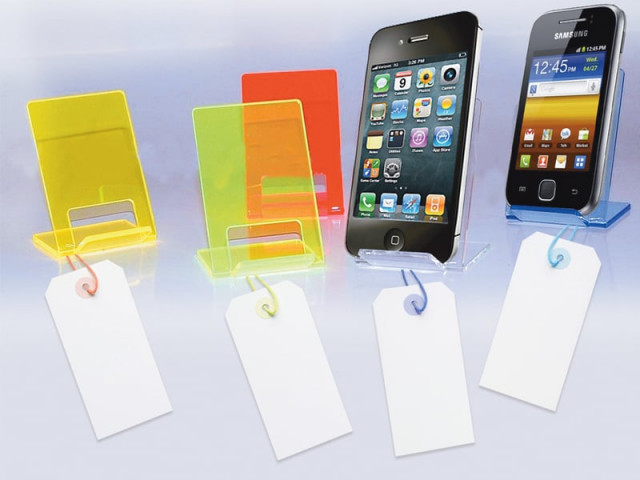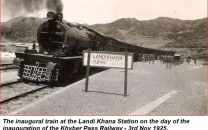Cheap is smarter: Let the smartphone price wars begin
For the segment to take off in Pakistan, cheaper options and 3G technology are key.

Cheap is smarter: Let the smartphone price wars begin
While Apple and Samsung take each other on in the lucrative high-end smartphone market, there is another battle taking place in the less glamorous world of inexpensive smartphones.
With an ever-growing portion of the world's multi-billion mobile phone users replacing their basic cellphones, with better and more advanced options, the market is exploding for smartphones that cost about $150 or less. And the lead in this has been taken by Chinese companies like Huawei and ZTE who are leaders in that segment. Better known brands like Samsung also compete well in this segment that has been totally shunned by other big players like Apple and HTC. Apple of course has never bothered about the low- or even mid-end segments while HTC has said in a recent press statement that it will not enter the lower-end segment, just the mid- and high-end segments.
HTC will remain focused on the mid-to-high end of the smartphone market despite its recent struggles, according to CEO Peter Chou. “We don’t want to destroy our brand image,” Chou said in an interview with the Wall Street Journal. “We insist on using better materials to make better products that offer premium experience. Many consumers like that.”
Nokia is still the global and regional leader when it comes to low-end phones – despite a strong challenge by Chinese manufacturers – but it too has not really stepped into the low-end smartphone market, yet. Their recent Asha series priced at about Rs10,000 is a definte improvement but at the end of the day, they are not smartphones. They are still Symbian phones with a vastly improved user interface.
But the low-end segment of the smartphone market is now getting even more crowded, as Chinese internet companies such as Alibaba and Baidu jump on the bandwagon by teaming up with electronics makers to launch inexpensive smartphones.
“There are too many new entrants in the low-end segment, and competition is getting more and more intense,” said Nicolas Baratte, CLSA’s regional head of technology research, according to media reports. Margins will be very thin and it will be difficult for anyone to make money in that segment, he added.
Last month, Baidu, China’s biggest Web search engine, teamed up with major Chinese TV maker Changhong to launch a smartphone priced under Rs15,000. Meanwhile, Alibaba, China’s biggest e-commerce company, and Haier, a major Chinese home appliances maker, said this month that they are together launching a smartphone, also priced just under Rs15,000. With the new smartphones, which run on operating systems that steer users to the Internet companies’ services, Baidu and Alibaba are trying to generate more mobile traffic for their services.
And now, in Pakistan, following Samsung’s offering in the Rs10,000 to Rs15,000 QMobile, a Pakistani brand, which markets Chinese phones has come up with a sub-Rs10,000 android phone.
After talking to some local cellphone dealers, the general impression one gets is that customers are increasingly chasing lower prices. This is the primary reason why Pakistan has a booming used phone market. This is of course fuelled by issues like lower disposable income, and the higher incidence of theft which has forced people to not buy more expensive phones. The other factor which has discouraged smartphone sales in Pakistan is the absence of 3G, at a time when the world, for the most part has moved on to 4G. Yet, at the same time dealers say that now more and more people want smartphone that lets them get on the internet, do social networking, lets them play video games, and play video but at an affordable price.
Apart from the users who are loyal fans of Apples iPhone or the Samsung Galaxy series, the rest of the market is now moving towards lower prices. This is truer of course for markets with two attributes. One, is the absence of an option of being able to buy discounted phones with an annual plan, and two, where the buying power is still low. At least one of these two is true for three of the largest populations in the region, China, India and Pakistan.
And now an increasing number of lesser-known Chinese brands are also selling smartphones that cost about a quarter of the price of Apple’s iPhone 4S, fueling further growth in a market that is already the world’s largest after it surpassed the US late last year. So it is a good enough gauge of what will, or can work in Pakistan as well.
If we take a look at the Chinese market smartphones priced between Rs7,000 and Rs15,000 accounted for about 64% of the market in the first quarter of this year, compared with 45% less than a year ago, according to research firm Analysys International. Meanwhile, the percentage of smartphones priced between Rs15,000 and Rs22,000 has decreased to 14% from 22% over the same period. This is a clear indicator that any player who can cut prices will take the lead.
Pakistan is no different.
Published in The Express Tribune, August 20th, 2012.


















COMMENTS
Comments are moderated and generally will be posted if they are on-topic and not abusive.
For more information, please see our Comments FAQ